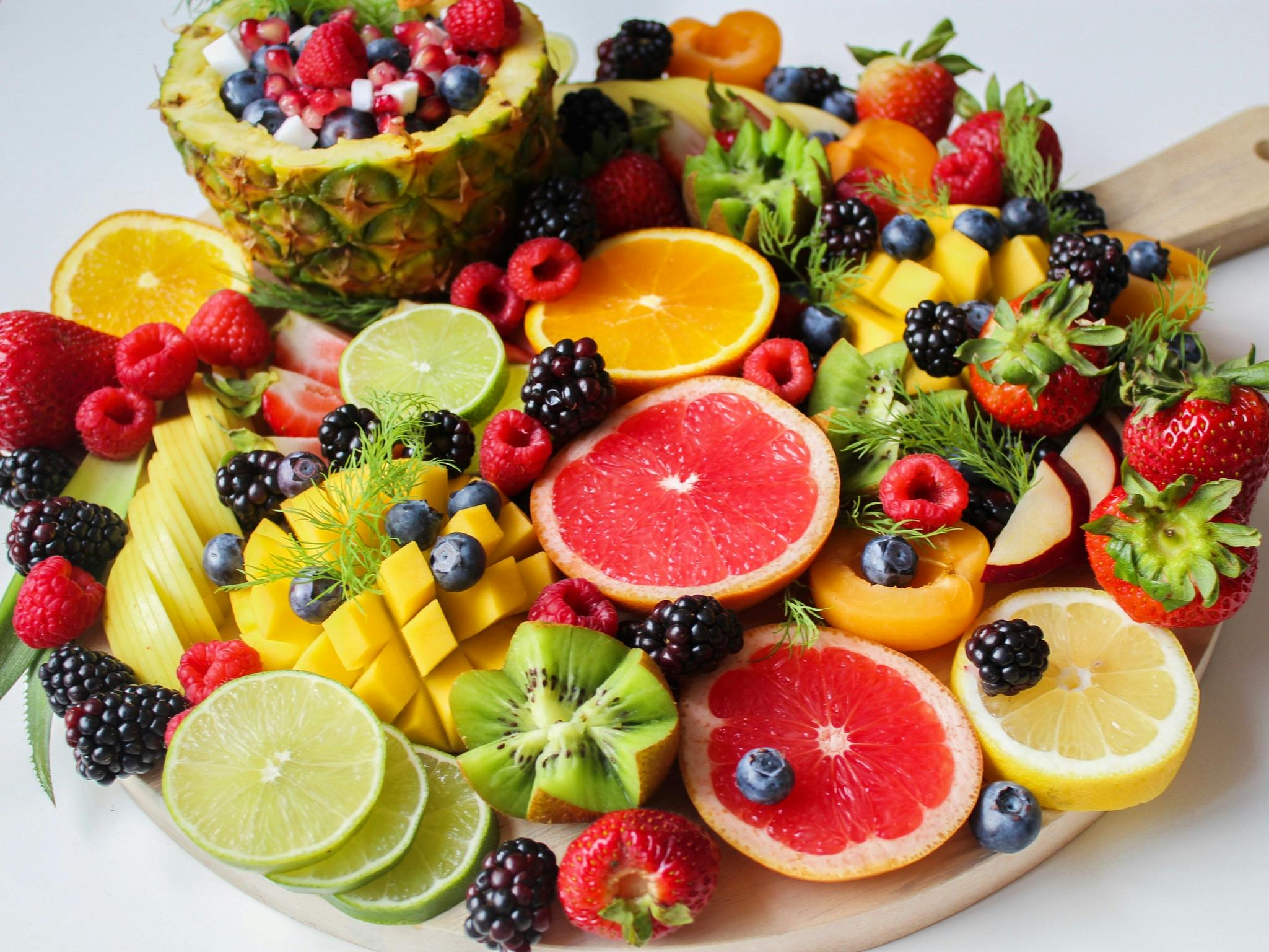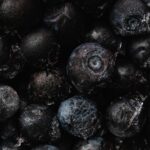In the world of health and nutrition, fiber is a crucial component that often doesn’t get the attention it deserves. Fiber plays a key role in digestion. That’s helps regulate blood sugar levels, and supports heart health, making it an essential part of a balanced diet. Apples are well-known as a high-fiber fruit, packing around 4.4 grams of fiber per medium-sized apple. There are plenty of other fruits that surpass this fiber content and offer a wider array of flavors and benefits. In this article, we’ll dive into nine fruits that contain more fiber than an apple and how they can benefit your diet.
For more Health Related information : Eat Healthy Stay Fit.
1. Passion Fruit.

One of the most fiber-packed fruits out there, passion fruit contains an impressive 10.4 grams of fiber per cup. This tropical delight is often associated with exotic flavors. Its pulp is filled with crunchy seeds. Passion fruit is not only delicious but also packed with vitamins A and C, offering a boost to your immune system.
You can enjoy passion fruit raw or use it as a tangy addition to smoothies, breakfast bowls, or even salad dressings. It pairs especially well with other tropical fruits like mango or pineapple. If you’re looking for a sweet and nutritious way to increase your fiber intake, passion fruit is a perfect choice.
2. Raspberries.

Raspberries are a powerhouse of fiber, containing about 8 grams per cup. These small, flavorful berries are easy to add to various meals and snacks, making them a versatile option in a high-fiber diet. This fruit is also rich in antioxidants and vitamin C.
Raspberries can be added to your breakfast oatmeal, mixed into yogurt, or blended into smoothies. They are also an excellent addition to salads or even used as a natural sweetener in desserts. For a fiber-rich snack, try combining raspberries with high-protein yogurt or nuts.
3. Guava.

Guava is another fruit that surpasses the apple when it comes to fiber content. A single guava contains about 9 grams of fiber. Guava is packed with nutrients, particularly vitamin C, making it a fruit that supports both digestive health and immune function.
Guava can be eaten raw or sliced into salads. Its sweet flavor and slightly grainy texture make it perfect for smoothies, jams, and even juices. For those looking to boost fiber and vitamin C intake, guava is a must-have fruit in your diet plan.
4. Blackberries.

Similar to raspberries, blackberries are another type of berry that is exceptionally high in fiber, offering about 7.6 grams per cup. These dark, juicy berries have a bold flavor and are packed with vitamins A and C. Blackberries contain powerful antioxidants that can help fight inflammation and improve skin health.
Blackberries are great in a variety of dishes, from smoothies and breakfast bowls to salads and desserts. You can also enjoy them as a snack on their own or mixed into high-protein Greek yogurt for a nutritious, fiber-packed treat.
5. Avocado.

While most people associate avocados with healthy fats, they are also a rich source of fiber. One medium avocado contains around 10 grams of fiber, making it a standout among fruits. Avocados also provide heart-healthy monounsaturated fats, potassium, and various vitamins.
Avocados are incredibly versatile in the kitchen. You can mash them for guacamole, slice them into salads, blend them into smoothies, or even spread them on toast for a fiber-packed breakfast. Their creamy texture and mild flavor make them a favorite among health-conscious eaters.
6. Persimmon.

Persimmons are less commonly found in everyday diets but are a fantastic source of fiber, with around 6 grams of fiber per medium-sized fruit. These vibrant orange fruits are rich in vitamins A and C and offer a sweet, honey-like flavor.
Persimmons can be eaten raw or added to salads, breakfast bowls, or even baked into desserts. Their unique taste and high fiber content make them a great addition to a health-conscious meal plan, especially if you’re looking for a fruit that offers more fiber than an apple.
7. Dragon Fruit.

Also known as pitaya, dragon fruit is an exotic fruit that contains about 7 grams of fiber per cup. In addition to fiber, dragon fruit is rich in magnesium and antioxidants, which can help support heart health and fight inflammation.
Dragon fruit is commonly eaten raw, and its mildly sweet flavor and crunchy texture make it an excellent addition to salads, smoothies, or breakfast bowls. Its vibrant pink or yellow skin and speckled flesh make it visually appealing, but its nutritional profile is what makes it a standout choice in a high-fiber diet.
8. Pear.

Pears are often overlooked in favor of apples, but when it comes to fiber content, pears outshine their better-known counterpart. A medium pear contains about 5.5 grams of fiber, making it a fantastic addition to a fiber-rich diet. Like apples, pears are also a great source of vitamin C and potassium.
Pears are delicious raw but can also be roasted, grilled, or poached to bring out their natural sweetness. They pair well with both sweet and savory flavors, making them a versatile fruit for salads, desserts, or even as a topping for oatmeal or yogurt.
9. Kiwi.

Kiwi is another fruit that exceeds apples in terms of fiber content, with about 5.4 grams per cup. Known for vibrant green color and tart-sweet flavor, kiwi is also packed with vitamin C, vitamin K, and antioxidants.
You can eat kiwi, raw or blended into smoothies. It’s also great as a topping for yogurt, cereal, or salads. The high fiber content and nutrient density of kiwi make it a fantastic fruit to include in your diet, especially if you’re looking to boost your fiber intake.
The Health Benefits of a High-Fiber Diet.
Incorporating high-fiber fruits like passion fruit, raspberries, guava, and blackberries into your diet can have profound health benefits. Fiber is essential for digestive health, helping to regulate bowel movements and prevent constipation. It also plays a critical role in managing blood sugar levels, making high-fiber fruits ideal for people with diabetes or those looking to prevent blood sugar spikes.
Fiber-rich diets have been linked to reduced risks of heart disease and certain types of cancer, particularly colon cancer. By adding fruits like avocado and persimmon to your meals, you’re not only increasing your fiber intake but also consuming a wide variety of vitamins, minerals, and antioxidants that support overall health.
Incorporating High-Fiber Fruits into Your Diet.
Adding these fiber-rich fruits to your daily meals. Here are some simple ideas to get you started:
- Breakfast: Start your day with a fiber-packed smoothie using raspberries, blackberries, or kiwi. You can also add slices of pear or guava to your oatmeal or yogurt for added texture and flavor.
- Lunch: Toss some dragon fruit or avocado into your salad for a colorful and nutritious lunch. Pairing these fruits with leafy greens, nuts, and seeds will not only boost your fiber intake but also provide you with healthy fats and protein.
- Snacks: Keep passion fruit or a handful of raspberries on hand for a quick, high-fiber snack. You can also mix guava or kiwi slices with nuts or seeds for a satisfying and nutritious mid-day boost.
- Dinner: Use avocado as a topping for grain bowls or tacos to add a creamy texture and fiber boost to your dinner. You can also use pears or persimmons as a natural sweetener in savory dishes like roasted vegetables or grain salads.
Conclusion.
Apples are often praised for their fiber content and overall health benefits, there are plenty of other fruits that offer even more fiber and a broader range of nutrients. From passion fruit to kiwi, these high-fiber fruits are not only delicious but also provide numerous health benefits, including improved digestion, better blood sugar control, and enhanced heart health. By incorporating these fiber-packed fruits into your meals and snacks, you’ll be well on your way to a more nutritious, balanced diet that supports overall well-being.
Incorporating these fruits into your daily eating plan can be a delicious and easy way to ensure you’re meeting your fiber needs while enjoying the variety of flavors and textures that nature has to offer. Whether you’re blending them into smoothies, tossing them into salads, or simply eating them raw, these fruits can add both nutritional value and vibrant flavors to your diet.
Our YouTube : Health and Fitness.




